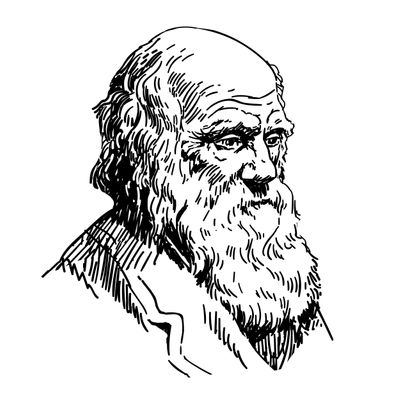4.1.1
Science
Darwin vs Religion
Darwin vs Religion
In the early 19th Century, the idea of God being in charge was universally accepted. Then came Darwin. In 1859, Darwin’s On the Origin of Species claimed that creatures evolved and were not created.


Darwin's theories
Darwin's theories
- Darwin later argued that we descend from amphibians that turned into apes. This challenged religious dogma and presented new ideas that man descended from a ‘hairy tailed quadruped’ creature, which had evolved from ‘some amphibious creature’. Darwin had put forward his theory of evolution, and many people were persuaded by it.
- In the early 1800s, Christianity taught that God created every species (creationism) and the ideas that Darwin proposed challenged these Christian ideals. Darwin’s book claimed that all creatures evolved from common ancestors - and this went against one of the main Christian ideas that we are created by God’s hand.


Jekyll & Hyde
Jekyll & Hyde
- This would have been very unsettling and a nightmarish notion for many Victorians. Stevenson aims to horrify the Victorian reader by engineering the themes of his novella to evoke their deep-seated fears.
- Mr Hyde is described as looking “hardly human…troglodytic”. This presents him as a criminal and someone who does not fit in with the rest of society. He is a physical manifestation of the pre-human animal.
- The idea that such an animal could hide behind the façade of a well-represented member of the community would have been a shocking possibility for the Victorian reader, especially in a society where the external appearances were of a high value.
Hyde - Primitive and Non-Human
Hyde - Primitive and Non-Human
The following quotes present Hyde as primitive and non-human:
Science as a Fearful Force
Science as a Fearful Force
Stevenson explores ideas of death and destruction and going against God through the theme of science.


Symbolism of Jekyll's experiments
Symbolism of Jekyll's experiments
- Jekyll’s experiments cause destruction and death of the people around him, and this shows the potential of science to destroy the order of society and disrupt the rigid Victorian expectations.
- Jekyll’s drugs are described as intrusive objects, “some white salt” and “some strange things” - this vague language is deliberately used to create ambiguity and mystery around his medicines, and evoke anxiety and fear in the reader.


Theories about creating life
Theories about creating life
- Victorians thought that the earth was created by God - and scientists, like Darwin, challenged this theory with his ideas about evolution.
- Darwin still believed that God was the ultimate lawgiver.


Jekyll's suffering
Jekyll's suffering
- The idea that science could create life was seen as dangerous, and Jekyll’s failed experiment leaves him as “chief of sinners”.
- By the final chapter, Jekyll is caught in a state of “suffering” where there is a “brute that slept” within him, and he is “tortured with throes and longings” to turn into Hyde. The language of agony that Jekyll uses links to the Christian notion of hell - his selfish motivations for the experiment leave him trapped in limbo.
1Plot Summary
2Characters
2.1Jekyll & Hyde
3Gothic Genre
4Key Themes
5Context & Author
6Literary Techniques
6.1Literary Techniques
7Grade 9 - Key Character & Theme Questions
7.1Key Character & Themes - Linked Questions
8Recap: Main Quotes
Jump to other topics
1Plot Summary
2Characters
2.1Jekyll & Hyde
3Gothic Genre
4Key Themes
5Context & Author
6Literary Techniques
6.1Literary Techniques
7Grade 9 - Key Character & Theme Questions
7.1Key Character & Themes - Linked Questions
8Recap: Main Quotes
Unlock your full potential with Seneca Premium
Unlimited access to 10,000+ open-ended exam questions
Mini-mock exams based on your study history
Unlock 800+ premium courses & e-books